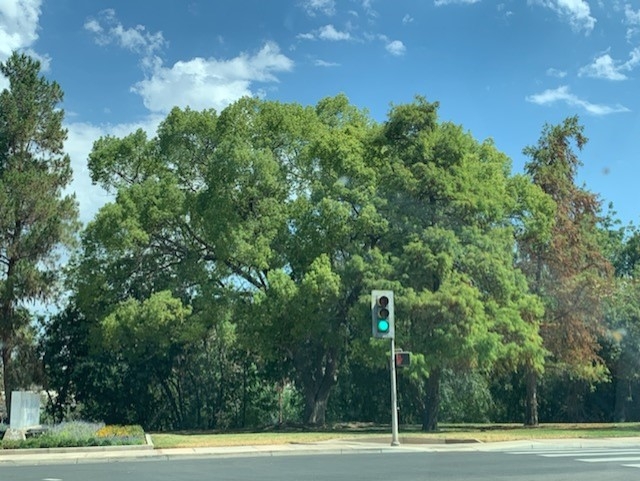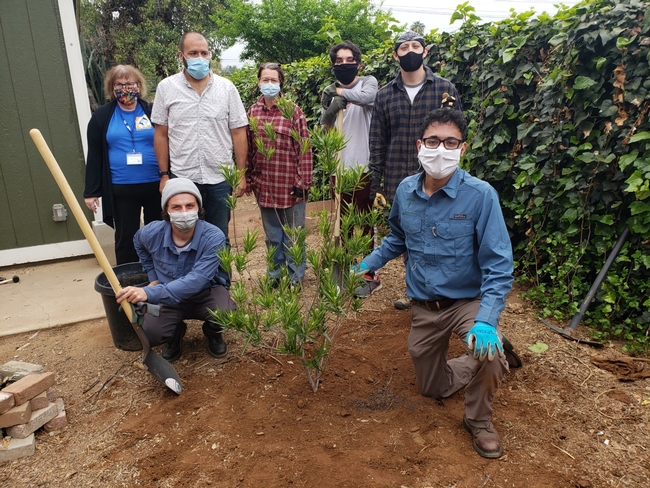
Posts Tagged: University of California
Climate change resources for Horticulturists, Government Officials, and UCCE Master Gardeners
Climate Change Resources for Horticulturists and UCCE Master Gardeners
Updated by Janet Hartin jshartin@ucanr.edu 8/17/2022
University of California UC ANR Green Blog (Climate Change and Other Topics) https://ucanr.edu/blogs/Green/index.cfm?tagname=climate%20change (full index)
Examples:
- Save Trees First: Tips to Keep Them Alive Under Drought https://ucanr.edu/b/~CdD
- Landscaping with Fire Exposure in Mind: https://ucanr.edu/b/~G4D
- Cities in California Inland Areas Must Make Street Tree Changes to adapt to Future Climate https://ucanr.edu/b/~oF7
Drought, Climate Change and California Water Management Ted Grantham, UC Cooperative Extension specialist (23 minutes) https://youtu.be/dlimj75Wn9Q
Climate Variability and Change: Trends and Impacts on CA Agriculture Tapan Pathak, UC Cooperative Extension specialist (24 minutes) https://youtu.be/bIHI0yqqQJc
California Institute for Water Resources (links to blogs, talks, podcasts, water experts, etc.) https://ciwr.ucanr.edu/California_Drought_Expertise/
UC ANR Wildfire Resources (publications, videos, etc.) https://ucanr.edu/News/For_the_media/Press_kits/Wildfire/ (main website)
UC ANR Fire Resources and Information https://ucanr.edu/sites/fire/ (main website)
Preparing Home Landscaping https://ucanr.edu/sites/fire/Prepare/Landscaping/
UC ANR Free Publications https://anrcatalog.ucanr.edu/ (main website)
Keeping Plants Alive Under Drought and Water Restrictions (English version) https://anrcatalog.ucanr.edu/pdf/8553.pdf
(Spanish version) https://anrcatalog.ucanr.edu/pdf/8628.pdf
Use of Graywater in Urban Landscapes https://anrcatalog.ucanr.edu/pdf/8536.pdf
Sustainable Landscaping in California https://anrcatalog.ucanr.edu/pdf/8504.pdf
Other UC (Non-ANR) scientists
Daniel Swain (UCLA): website: https://weatherwest.com/ twitter: @Weather_West
Non-UC Climate Change Resources
Urban Forests and Climate Change. Urban forests play an important role in climate change mitigation and adaptation. Active stewardship of a community's forestry assets can strengthen local resilience to climate change while creating more sustainable and desirable places to live. https://www.fs.usda.gov/ccrc/topics/urban-forests
Examining the Viability of Planting Trees to Mitigate Climate Change (plausible at the forest level) https://climate.nasa.gov/news/2927/examining-the-viability-of-planting-trees-to-help-mitigate-climate-change/
Reports and other information resources coordinated under the auspices of the United Nations and produced through the collaboration of thousands of international scientists to provide a clear and up to date view of the current state of scientific knowledge relevant to climate change. United Nations Climate Action
Scientific reports, programs, action movements and events related to climate change. National Center for Atmospheric Research (National Science Foundation)
Find useful reports, program information and other documents resulting from federally funded research and development into the behavior of the atmosphere and related physical, biological and social systems. Search and find climate data from prehistory through to an hour ago in the world's largest climate data archive. (Formerly the "Climatic Data Center") National Centers for Environmental Information (NOAA)
Think tank providing information, analysis, policy and solution development for addressing climate change and energy issues (formerly known as the: "Pew Center on Global Climate Change"). Center for Climate & Energy Solutions (C2ES)
Mapping Resilience: A Blueprint for Thriving in the Face of Climate Disaster. The Climate Adaptation Knowledge Exchange (CAKE) was launched in July 2010 and is managed by EcoAdapt, a non-profit with a singular mission: to create a robust future in the face of climate change by bringing together diverse players to reshape planning and management in response to rapid climate change. https://www.cakex.org/documents/mapping-resilience-blueprint-thriving-face-climate-disaster
Cal-Adapt provides a way to explore peer-reviewed data that portrays how climate change might affect California at the state and local level. We make this data available through downloads, visualizations, and the Cal-Adapt API for your research, outreach, and adaptation planning needs. Cal-Adapt is a collaboration between state agency funding programs, university and private sector researchers https://cal-adapt.org/
Find reports, maps, data and other resources produced through a confederation of the research arms of 13 Federal departments and agencies that carry out research and develop and maintain capabilities that support the Nation's response to global change. Global Change (U.S. Global Change Research Program)
The Pacific Institute is a global water think tank that combines science-based thought leadership with active outreach to influence local, national, and international efforts to develop sustainable water policies. https://pacinst.org/our-approach/
Making equity real in climate adaptation and community resilience policies and programs: a guidebook. https://greenlining.org/publications/2019/making-equity-real-in-climate-adaption-and-community-resilience-policies-and-programs-a-guidebook/
Quarterly CA Climate Updates and CA Drought Monitor Maps (updated each Thursday) https://www.drought.gov/documents/quarterly-climate-impacts-and-outlook-western-region-june-2022
"Trees for Tomorrow Start Today" Master Gardener Program Application for San Bernardino County Residents
Applications Now Being Accepted for the University of California Cooperative Extension Master Gardener Program “Trees for Tomorrow Start Today” Project.
University of California Cooperative Extension (UCCE) San Bernardino County is currently recruiting adults (18 and over) who are interested in becoming volunteers for our "Trees for Tomorrow" project. Complete training is provided online through a 50-hour Master Gardener training class taught by subject matter experts. Master Gardener volunteers will provide research-based information on the selection and care of heat, drought, and pest resistant trees and help our non-profit partners and community leaders enhance tree canopy cover in our most vulnerable neighborhoods. (To date, we are proud to have partnered with the Inland Empire Resource Conservation District, CA Climate Action Fellows and many non-profit organizations, communities, ESRI, and others to give away over 600 trees in the last year!)
Applications to become a UCCE Master Gardener volunteer for this project are open through August 31, 2022. UCCE Master Gardener “Trees for Tomorrow” Volunteer Application link: http://ucanr.edu/u.cfm?id=287
Questions about the application process or the volunteer opportunity? Contact UCCE Area Environmental Horticulturist Janet Hartin at jshartin@ucanr.edu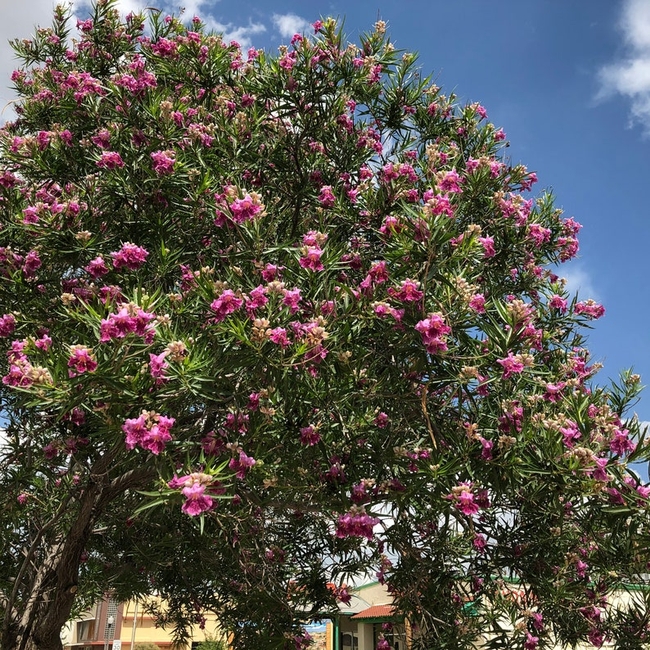
Why volunteer for this project? We are facing unprecedented times due to climate change and urban heat islands increasing temperatures in our communities. One of the solutions to a "cooler, greener, tomorrow" is through tree planting and proper selection and long-term care of heat, drought, and pest resistant trees.
Why trees? Shade produced by a single tree can reduce surface temperatures of asphalt and other impervious surfaces by up to 65 degrees F. Trees also lower air temperatures; enhance pollinator and wildlife habitat; absorb pollutants; reduce energy use and related costs (homes, offices, vehicles); beautify neighborhoods; absorb and store carbon dioxide; and provide many other ecosystem and societal benefits.
You can make a difference like never before enhancing tree canopy cover in our neighborhoods. Do you want to learn more about what UCCE Master Gardeners do for San Bernardino County residents and communities, find out what upcoming events they are hosting, or have them answer your horticulture questions Here's your pot of gold: https://mgsb.ucanr.edu/
We are looking forward to hearing from you!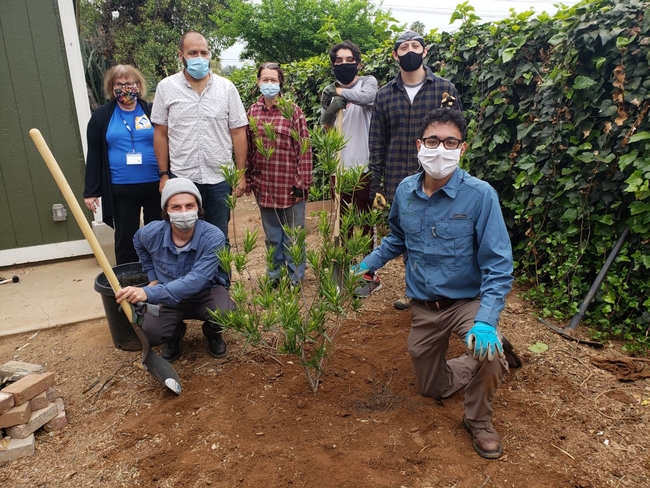
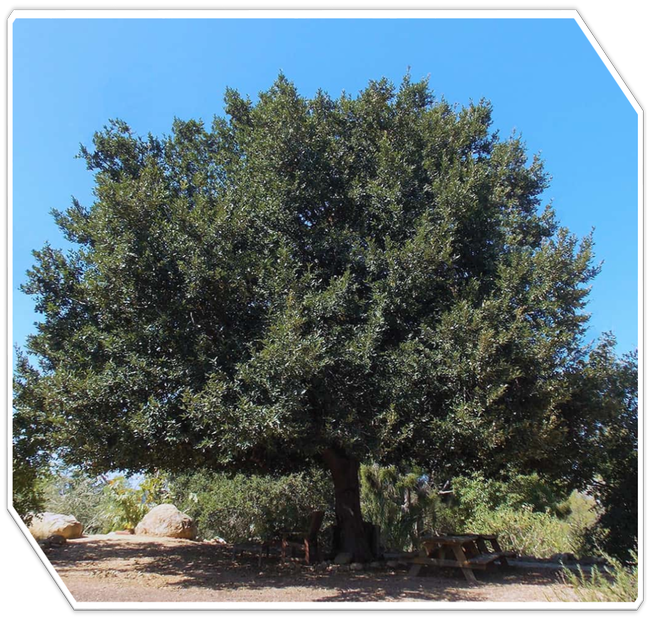
MG of SB County Tree
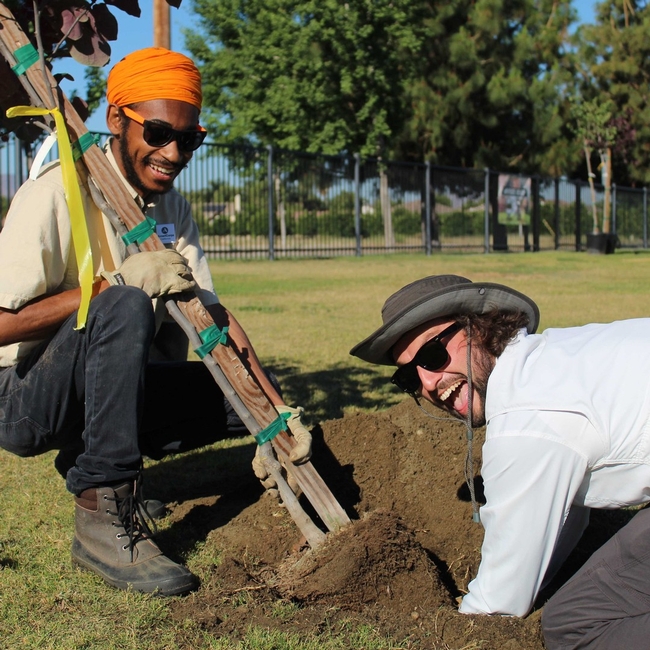
Trees for tomorrow 2021 Redlands Sports Park
Drought Resources for Keeping Trees Alive
University of California Cooperative Extension Drought Resources To Keep Your Plants Alive
"Trees Come First Under Drought and Water Restrictions"
Keeping Plants Alive Under Drought and Water Restrictions (English) https://anrcatalog.ucanr.edu/pdf/8553.pdf
Keeping Plants Alive Under Drought and Water Restrictions (Spanish) https://anrcatalog.ucanr.edu/pdf/8628.pdf
Prioritizing Trees During Drought and Water Restrictions (5 minute Youtube)
https://www.youtube.com/watch?v=CTKLlJgdLVk
Tips to Keep Your Landscape Trees Alive Under Drought https://ucanr.edu/b/~IjC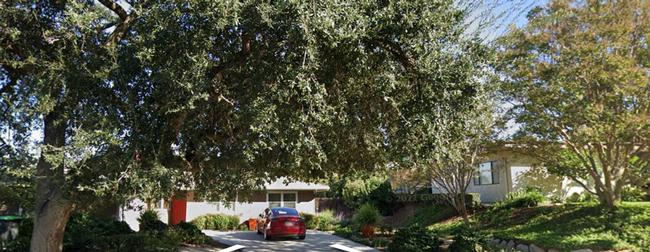
Landscape Tree Irrigation to Maximize Tree Health, Benefits, and Beauty https://ucanr.edu/b/~YjA
Landscape Tree Irrigation 101 https://ucanr.edu/b/~UjA
Top 10 Ways to Conserve Water in Your Landscape and Garden https://ucanr.edu/b/~tTD
Asphalt and Synthetic Turf are Superheating our Cities (in Desert Sun newspaper) https://www.desertsun.com/story/opinion/contributors/valley-voice/2022/04/09/coachella-valleys-asphalt-synthetic-lawn-heat-islands-reach-170/9515857002/
Use of Graywater in Urban Landscapes in California https://anrcatalog.ucanr.edu/pdf/8536.pdf
Need More Help? Speak to a UC Cooperative Extension Master Gardener in Your County of Residence. 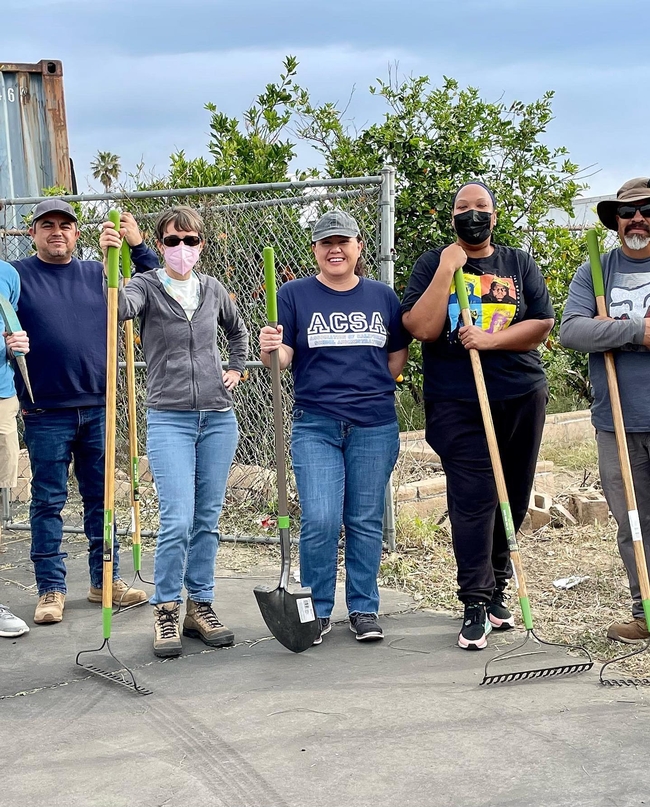
How do plants "communicate"?
o you ever wonder if plants “communicate” with each other? If so, you're not alone. The research on this important and fascinating topic has increased dramatically in the last decade. My interest in it dates back decades to my graduate school thesis that involved how phenolic acids exuded by the roots of garden pea (Pisum sativum) accessions from around the world warded off weeds that would otherwise have crowded them out. This was an early form of biological weed control for sure! The seeds we studied were 20-30 years old and had been carefully stored and preserved in USDA facilities for research such as this.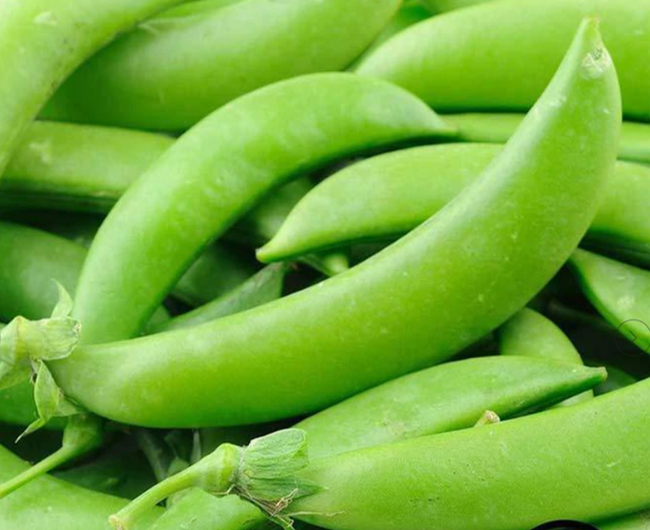
They were all non-hybrids that had unadulterated natural genetic qualities. While I am in no way suggesting that plant breeding isn't overall a positive advancement, there are instances where something is lost when something is gained, and genes are certainly no exception! Sometimes breeding for an improvement in one facet (production per acre, nutrition, etc.) results in the loss of another genetically controlled factors that may be negative or positive.
At about the same time I was pursuing my research described above at University of Minnesota, University of Washington zoologist David Rhoades demonstrated how some plants defend themselves against insect attacks by changing the nutritional and/or taste of their foliage. In turn, insects that otherwise would chow down on the tasty leaves look elsewhere for their lunch. Since then, research identifying the multiple paths that plants use to exchange information with neighboring plants (largely within their own species) and ward off herbivores (organisms feeding mostly on plants), diseases, and weeds has nearly tripled. While a lot of this chemical information exchange relates to the release of volatile organic compounds in the root zone and through the air, electrical signaling among plants also occurs.
Below are a few recent examples:
-Lima beans attacked by insects signaled nearby lima bean plants who built up defenses to avoid damage
-Lodgepole pines attacked by a beetle signaled neighboring trees who had time to prepare for attack.
While, traditionally, research identified these chemical warnings occurring only in neighboring plants of the same species, Cornell researchers discovered that sagebrush (Artemisia tridentata)with insect damage can release chemical signals recognized by wild tobacco (Nicotiana attenuata). In turn, the tobacco plants pump up their arsenal of chemical defenses to avoid damage. (Interestingly, the tobacco plants don't waste precious nitrogen and carbon on defense mechanisms until they are actually attacked since these elements need to be conserved as much as possible for future seed production.)
Ted Farmer's team at University of Lausanne, attached leaves of thale cress (Arabidopsis thaliana) with microelectrodes prior to infesting them with Egyptian cotton leafworms. Almost immediately, voltage changes radiated outward from the damaged leaf tissue in the damaged plant and other neighboring plants resulting in accumulation of jasmonic acid which reduced further damage. Genes responsible for transmitting the electrical signal create membrane channels inside cell walls that provide a conduit for charged ions. The genes in some ways parallel receptors that animals rely on to relay sensory signals through their bodies.
And last but certainly not least, Kudos to UC Davis ecologist/entomologist Richard “Rick” Karban, who was named a fellow of the Ecological Society of America (ESA) for “his innovative contributions to community and evolutionary ecology, especially through providing conceptual advances and rigorous experimental work on plant-insect interactions." Want to learn a log more about this topic." Still "hungry" for more information on this topic? You're in luck! Dr. Karban wrote a 240-page book entitled: Plant Sensing and Communication (University of Chicago Press).
Master Gardener Spotlight: Redlands Tree Canopy Enhancement Team
It's only right that our University of California Cooperative Extension (UCCE) San Bernardino County Master Gardener ‘Trees for Tomorrow' team of volunteers are our featured ‘Spotlight' Master Gardener volunteers for September, 2021. They provided vital education to Redlands residents receiving gratis trees through a multi-partnership grant obtained by Inland Empire Resource Conservation District Manager Mandy Parkes. 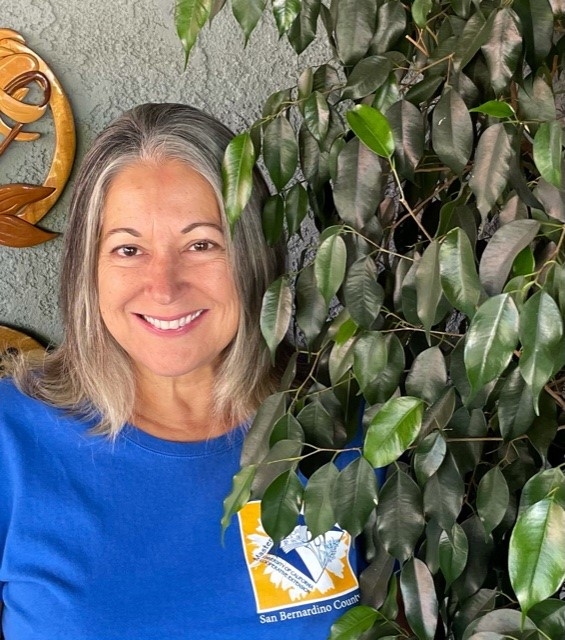
It's an honor and privilege to recognize UCCE San Bernardino County Master Gardener Project Leader Debbie LeDoux and her dedicated team of 'Trees for Tomorrow' volunteers: Zhibo (Sandy) Anderson; Consuelo (Connie) Davis (pictured); Pam O'Connell; Gail Sefl; and Husam Yousef. These dedicated Master Gardeners were tasked with helping residents select, plant and care for drought, heat, and pest tolerant trees. (Species including Chilopsis linearis 'Bubba', and Pistacia x 'Red Push' were selected due to their excellent performance in our University of California/United States Forest Service research project as 'climate-ready' trees able to withstand harsh conditions related to our changing climate.) Working with a team of California Climate Action Corps volunteers, civic leaders, Common Vision Coalition, and other groups, nearly 100 trees were planted in yards and parks lacking the preferred 25% tree canopy cover.
Trees can cool urban heat islands by 50 degrees Fahrenheit or more during spring and summer, creating welcome oases in hot inland communities. With spring 2021 temperatures so high they broke previous records on multiple dates, the project is especially timely and necessary.
In addition to proper tree selection, trees require the right long-term care. Master Gardeners will continue to provide advice on irrigation, pruning, fertilizing and pest control to residents receiving trees long after the trees are planted. This is critical since an average urban tree lives less than 20% of its potential lifespan due largely to poor care. The long-term engagement of Master Gardeners with residents is as important as is selecting the right species.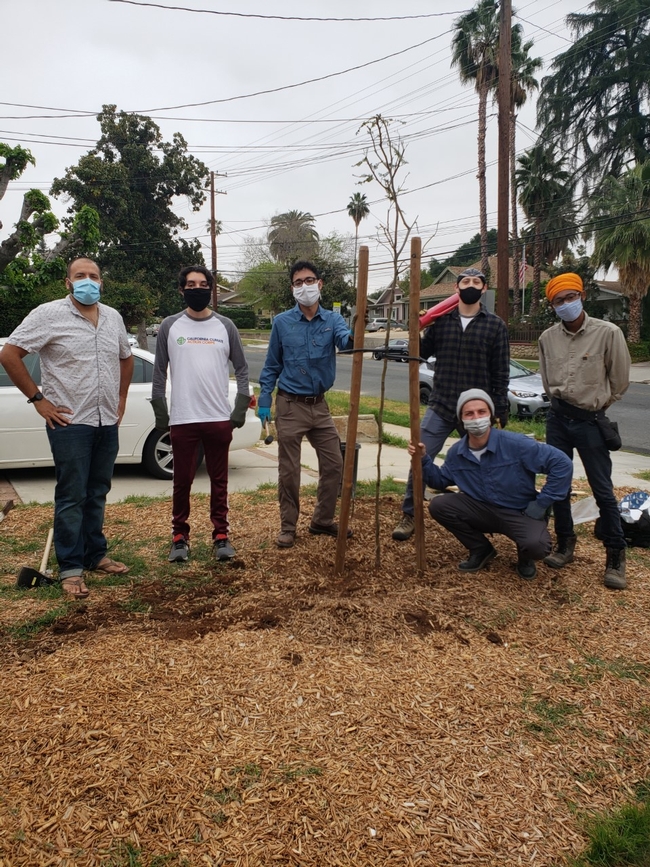
UCCE Master Gardeners are all volunteers, giving of their time and talents to enhance the quality of life for individuals and families who call San Bernardino County their home. Each Master Gardener is required to complete a rigorous 18-week training class complete with exams, class projects, and lots of participation! Due to COVID-19, volunteers had to master key horticultural concepts during the first ever all on-line training class. Only recently have they been able to meet fellow Master Gardener graduates and, in some cases, the Redlands residents they mentored through the tree canopy enhancement project. They truly exemplify community spirit and all it takes to successfully work together under adverse conditions. Kudos to each and every one of you from Master Gardener Coordinator Maggie O'Neil and myself! You are creating a cooler, greener and healthier environment for our children's children.
I asked the honored Master Gardeners their thoughts on the project. Here's what they had to say:
“The Redlands tree canopy project was the best volunteer project ever. In the midst of Covid-19, horrific politics and way too many good byes, it was a truly joyous experience. The legacy of being a part of the group that promoted healthy sustainable trees, knowledge of how to plant and care for them, tips on maintaining their health and beauty was the absolute best. For me as a Master Gardener, it was so much fun. I loved the site walks and getting to help our participants select the perfect sustainable trees for their properties. What started as a one-on-one visit often expanded to an enlarged group of neighbors and extended family. I got to give out many handouts and publications and promote our excellent Master Gardener program. I got to share our helpline email and phone numbers. I love the fact that I have been asked to revisit sites to see how great they are doing (once to make sure the tree did not look funny!). I receive emails every now and then asking me questions and showing me pictures of "Our Trees.” So much fun, Janet. Thank you. By far the coolest project ever! Pam O'Connell
------------------------------------------------------------------------------------------------------------------
There are a few things that really made an impact on me.1) It was rewarding to attend the Zoom presentation you developed that provided education to various professionals on the importance of planting sustainable trees. I found it to be open and inclusive allowing for good interchange of ideas and concerns.2) There are many beautiful trees that are sustainable.3) Reaching out to the community to offer beautiful, sustainable trees was a worthwhile way to show how various organizations can work together to benefit the community while trying to improve our environment.4) When dealing with homeowners that belong to an HOA, additional time and communication may be needed to assist them in obtaining approval for trees from their HOA's. Connie Davis
-----------------------------------------------------------------------------------------------------------------
"I see tree planting efforts similar to what a trend of the future is to combat climate change and increase awareness of the importance of trees and tree canopies in our neighborhoods. Not only that but I see this project expanded to other cities in the county of San Bernardino. The continuity of this project is so valuable so that we can see the positive impact on the environment and the well-being of San Bernardino residents in the coming decades. I see this important work being organized and well-coordinated by involving the appropriate stakeholders at all stages of the planning project. It is about time to give back what we have taken for tens of years!" Husam Yousef 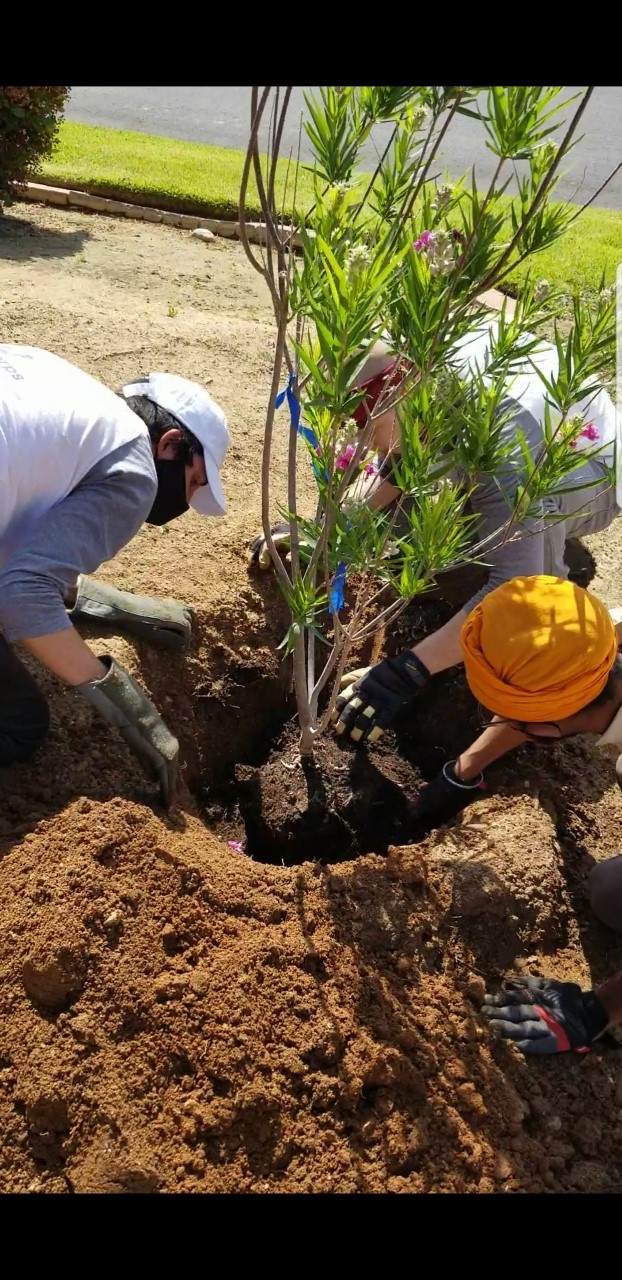
------------------------------------------------
It was rewarding to see local homeowners excited about planting trees and grateful for the program providing them. Gail Sefl
---------------------------------------------
THANK YOU ALL! Janet Hartin and Maggie O'Neill

